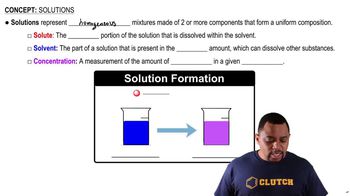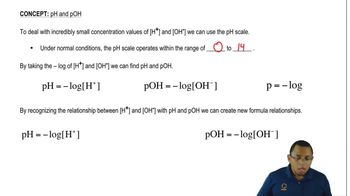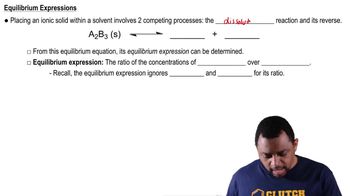Solution X has a pH of 9.0, and solution Y has a pH of 7.0.
a. Which solution is more acidic?
 Verified step by step guidance
Verified step by step guidance Verified video answer for a similar problem:
Verified video answer for a similar problem:



 1:31m
1:31mMaster The pH Scale Concept 1 with a bite sized video explanation from Jules
Start learning